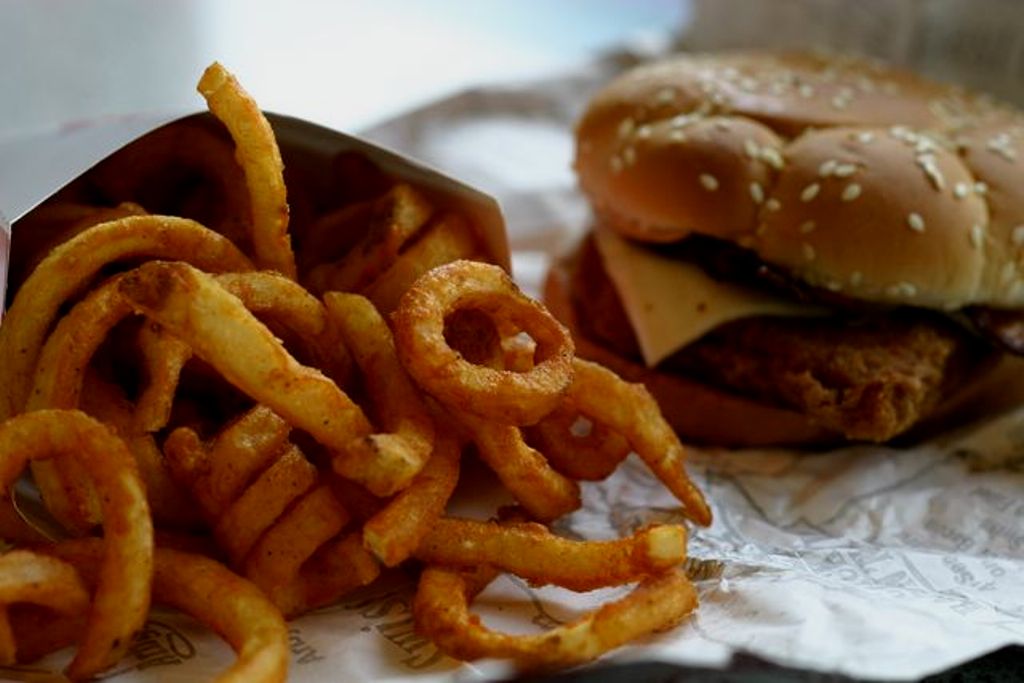Photo by CC user 73189667@N00 on Flickr
Many Americans struggle with high cholesterol and the health problems that often accompany the issue, but luckily, there are several ways to lower your levels.
Table of Contents
Risk Factors
According to the Centers for Disease Control and Prevention, it’s estimated that 31 percent of American adults have unhealthy levels of low density lipoprotein (LDL). Risk factors for high levels of LDL include having a large waist circumference, lack of exercise, poor diet, smoking, and genetics. The good news is that you have control over most of these risk factors, and there are steps you can take towards reducing your levels of LDL.
Health Problems that Come with High Cholesterol
High cholesterol has the potential to cause numerous health problems, including heart attacks and stroke. If your LDL levels are dangerously high, these problems can occur due to plaque build up in your arteries. When there’s not enough room for blood to pass through your arteries, blood flow can be blocked, leading to heart attack or stroke. Cardiovascular problems are common in Americans, so if you’d like to start down the path towards reversing or preventing these problems, read ahead to learn about ways to reduce your LDL levels.
Avoid Trans Fats
Trans fats are often found in packaged products, like crackers and mini cakes. If you’re known for loving these types of snacks, spend some time looking over labels before purchasing. Rather than avoiding foods that say “trans fat-free,” look at the ingredient list and stay away from products that include partially hydrogenated oils.
Eat More Omega 3s
When you’re concerned about heart health, it’s important to eat adequate amounts of Omega 3 fatty acids. Although Omega 3s won’t reduce your LDL levels, they do help to increase the “good” cholesterol (high-density lipoprotein). Foods that contain healthy Omega 3 fatty acids include salmon, almonds, and walnuts. Salmon is a very easy to prepare meal, as it takes only a few minutes of cook time. Walnuts and almonds are readily available at most grocery stores and they make great snacks for carrying with you to work or on the road.
Reduce or Eliminate Eggs
Eggs are known for being high in cholesterol, so if you’re trying to reduce your levels, it’s wise to reduce your intake or avoid them completely. If you can’t stand the thought of eating a sandwich without a thick layer of mayonnaise, try the healthy alternative made by hamptoncreek. Hampton Creek makes a line of sustainably produced eggless mayo and salad dressings to help you enjoy your meals without compromising your health.
Increase Soluble Fiber Intake
When you’re ready to lower your LDL levels, increase your intake of foods high in soluble fiber. Foods that contain soluble fiber include oatmeal, beans, and eggplant. These foods are usually easy to find in every grocery store, and they’re also easy to prepare. Oatmeal is a classic breakfast choice, known for its hearty goodness and ability to keep you feeling full until lunch. Eggplant is a bit more exotic, but there are plenty of delicious recipes to be found online.
Get More Exercise
Eating a healthy diet can combat high cholesterol, but it’s also important to get enough exercise. You should aim for at least two and a half hours per week of exercise, but it’s completely okay to build up to this level if you’re not used to being active. If you’re not particularly fit, taking time to build fitness is necessary to staying healthy and pain-free. Once you’ve established a program of exercise, you’re likely to see a difference in your cholesterol levels. Adequate exercise tends to raise HDL and lower LDL.
Conclusion
Almost one third of American adults are plagued by the dangers of high cholesterol . Whether you’re concerned about your current levels or you’re just trying to prevent problems from arising in the future, you should begin taking steps toward creating a healthier lifestyle. You can fight high cholesterol by eating a diet rich in Omega 3 fatty acids and soluble fiber, in addition to reducing or eliminating your intake of eggs. If you’re struggling to give up the foods you love, try opting for healthy alternatives like eggless mayo and salad dressing. Last but not least, make sure to start a fitness routine to begin strengthening your cardiovascular system. Once you get used to these healthier habits, you’re likely to see improvement in your cholesterol levels.
